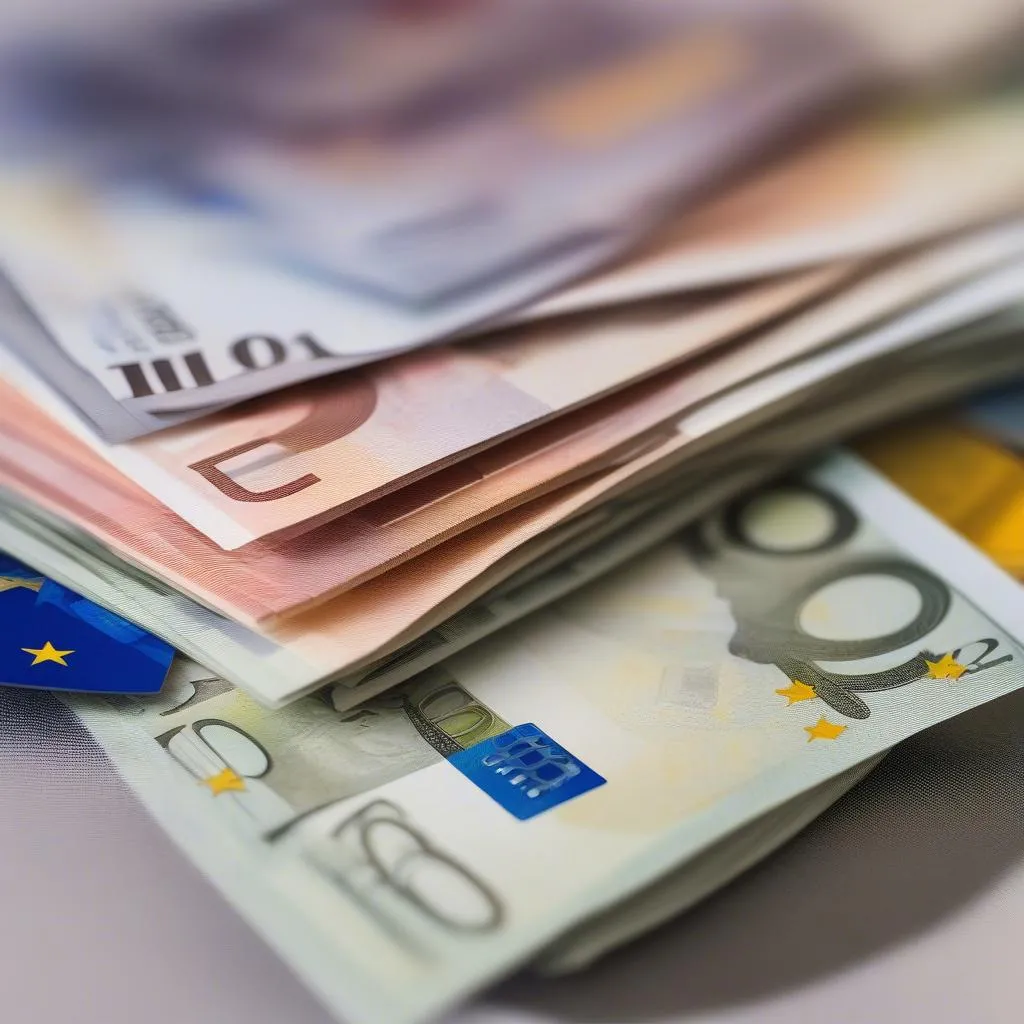Remember that time I was strolling along the Seine, admiring the Eiffel Tower’s grandeur? The only thing on my mind was deciding which delicious pastry to devour next. Of course, those Parisian delights require euros, and that’s where having a solid plan for currency exchange comes in handy. Don’t let the stress of figuring out where to get euros put a damper on your European adventure. Here’s everything you need to know:
Understanding Your Options: Where to Exchange Currency for Your Trip
Before you even pack your bags, let’s explore the best ways to get your hands on those euros:
1. Your Local Bank: Convenience at a Cost
Exchanging currency at your local bank is a reliable option, especially if you prefer to have euros in hand before your trip. While convenient, banks often charge higher exchange rates and fees. However, you can usually order currency online and pick it up at your local branch.
Pro Tip: Call your bank a few days before your trip to ensure they have the amount you need, especially if you require a less common currency.
2. ATMs Abroad: Easy Access, Potential Fees
ATMs are ubiquitous throughout Europe, offering a convenient way to withdraw euros directly from your checking account. Keep in mind that your bank might charge foreign transaction fees and ATM withdrawal fees.
Pro Tip: Inform your bank about your travel dates to avoid your card being blocked for suspicious activity.
3. Currency Exchange Kiosks: Location, Location, Location
You’ll find currency exchange kiosks at airports and tourist hotspots, but be wary of their often-unfavorable exchange rates, especially at airports.
Pro Tip: Compare rates at different kiosks before exchanging your money to secure the best deal.
4. Credit Cards: Embrace the Cashless Lifestyle
Many European businesses accept credit cards, minimizing the need for large amounts of cash. However, check with your credit card provider about foreign transaction fees, which can add up quickly.
Pro Tip: Use a credit card with no foreign transaction fees to save money on purchases.
Planning Your Currency Exchange: Tips for Smooth Sailing
1. Research Exchange Rates: Don’t Settle for Less
Exchange rates constantly fluctuate, so research and compare rates from various providers before your trip. Websites and apps like XE.com and Google Finance can help you stay updated.
2. Factor in Fees: Hidden Costs Can Add Up
Always ask about fees associated with currency exchange, including transaction fees, commissions, and inactivity fees. Factor these into your budget to avoid unwelcome surprises.
3. Order in Advance: Secure the Best Rates
Ordering currency from your bank or a reputable online provider a few weeks before your trip often secures better exchange rates than last-minute exchanges.
4. Notify Your Bank: Avoid Unnecessary Hassles
Alert your bank and credit card providers about your travel dates and destinations to prevent your cards from being flagged for suspicious activity.
Travel Story: Lost in Translation, Found in Kindness
Picture this: I’m in a charming bakery in Rome, the aroma of freshly baked bread filling the air. I’m eager to try their famous maritozzi, but there’s one problem – I’m fresh out of euros. The kind baker, noticing my predicament, generously offered me the pastry for free, insisting that hospitality knows no currency. This act of kindness, amidst the chaos of a foreign city, taught me that sometimes, the best travel experiences are priceless.
 charming-rome-bakery
charming-rome-bakery
FAQs: Your Burning Questions Answered
Q: Should I exchange currency before or after arriving in Europe?
A: Exchanging a small amount before your trip for immediate expenses like transportation is a good idea. However, you’ll likely get better rates by exchanging larger amounts at ATMs or banks in Europe.
Q: Are traveler’s checks still relevant?
A: While once popular, traveler’s checks are becoming increasingly obsolete. Consider more modern options like debit cards or prepaid travel cards for greater convenience and security.
Q: How much cash should I carry in Europe?
A: Carrying a small amount of cash for incidentals is advisable, but rely on ATMs and credit cards for most transactions.
Embrace the Journey: Explore with Confidence
With your euro situation sorted, you’re one step closer to creating unforgettable memories. For more insightful travel tips and tricks, visit travelcar.edu.vn. We’re dedicated to making your journey as smooth and enjoyable as possible.
 euro-currency-exchange
euro-currency-exchange